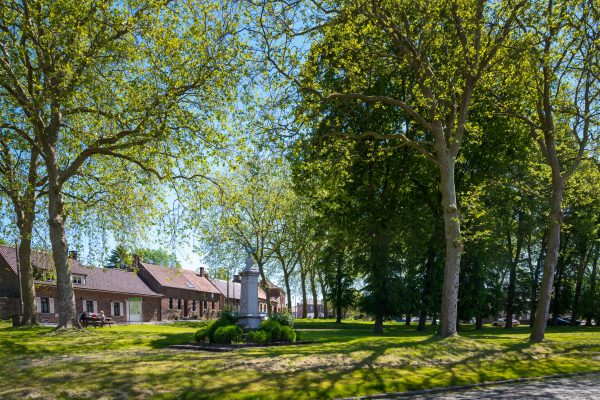Montignies-sur-Roc,Of stones and rivers
More than ten centuries old, Montignies-sur-Roc is rich in a thousand and one stones. Its charming heritage is heightened by the Petite Honnelle, which flows here and there through the village.

More than ten centuries old, Montignies-sur-Roc is rich in a thousand and one stones. Its charming heritage is heightened by the Petite Honnelle, which flows here and there through the village.


The undisputed charm of the location, its old stones and its paved roads take us back to the olden days. Montignies-sur-Roc owes its name to its location: on a rock overlooked by the church, it stretches along both banks of the Petite Honnelle and is crossed by the Roman road that joined Flanders to France, just a stone’s throw away. Montignies is structured around a square richly planted with lime trees and remarkable plane trees. This vast, triangular, grassy square, Place Masson, zigzags its way towards houses in the Tournai style. Some white, some red, some a manor house or a traditional building, they are characterised by alternating stones and bricks around the bays.
Not far away, the castle of Motte Baraffe in classical style, built at the end of the 17th century, the old windmill, the church of Notre-Dame and its artificial grotto… all of which keep us diving into the past. Multiple paths and old stairways join the bottom to the top of the location. An artisanal village in the heart of the Natural Park of the Haut-Pays is also an ideal starting point for hikers.
Royal Syndicat d’Initiative du Haut-Pays
Rue de la Place 1
7387 Honnelles
Tél. : +32 (0)65/ 63 17 37
Site web
Maison du Parc Naturel des Hauts-Pays
Rue des Jonquillles, 24
7387 Honnelles
Tél. : + 32 (0)65/ 46 09 38
Site web
Maison du Tourisme de la Région de Mons
Grand Place, 27
7000 Mons
Tél. : + 32 (0)65/ 33 55 80
Site web
The association Les Plus Beaux Villages de Wallonie (The Most Beautiful Villages of Wallonia) oversees a network of 32 villages, bearers of a strong territorial identity and reflecting traditional architecture. It is committed to promoting the rural, cultural and natural heritage of Wallonia and is a part of the development of local and responsible tourism.
More information